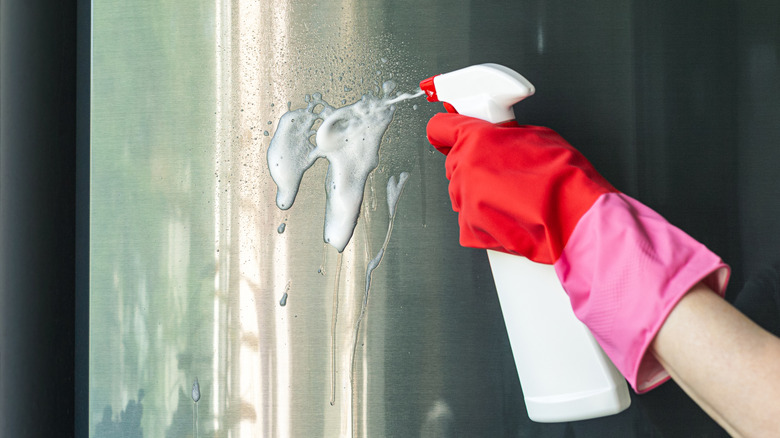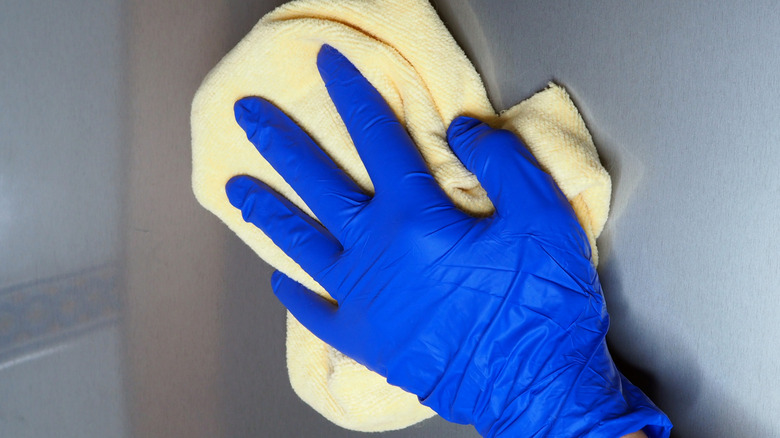The Common Mistake You'll Want To Avoid After Cleaning Stainless Steel Appliances
We may receive a commission on purchases made from links.
What's considered "in style" in the kitchen certainly comes and goes, including appliance and equipment materials. Yet, despite the constant churn of trendy kitchen appliances, stainless steel units continue to be popular in homes. When well-cared for, stainless steel looks supremely sleek and can easily pair with a broad range of colors in your kitchen. There are some downsides with stainless steel appliances, though, with cleaning and maintenance being among them. Since this metal material looks its best when shiny and spot-free, it's a big mistake to let your appliances air dry after wiping them down.
Stainless steel items should receive weekly cleanings, and you'll likely want to consider polishing your stainless steel appliances to help your kitchen look its absolute best. Whether you're using a commercial or homemade solution, it's common to face streaks and spots on the stainless surface. In other words, you might be left with dirty-looking stainless steel appliances, even if you've just cleaned them! It turns out that hard minerals in your water can leave behind unsightly spots on this metal surface as the liquid evaporates. The risk isn't exclusive to cleaning with water, however. Commercial cleaning agents can also leave behind streaky residue if you let them dry on your appliances, while harsh cleaners may even damage the protective top coat and leave stains.
Cleaning solutions for spotless stainless steel appliances
Commercial cleaning agents are arguably the easiest way to clean your appliances, with products like Weiman Stainless Steel Cleaner and Polish promising to give them a quality shine. You can also use a bit of water and dish soap to quickly clean up grease, debris, widespread fingerprints, and smudges. No matter which route you choose, though, you must use a separate microfiber cloth to dry and buff away any remaining liquid or residue. Hand drying stainless steel is the best way to prevent water or chemical agents from creating those unwanted marks on your appliances.
Alternatively, if you're looking to simply touch up your appliances in between deeper cleanings, you could try a bit of rubbing alcohol. Unlike water-based solutions and commercial cleaners, rubbing alcohol evaporates from these metal surfaces relatively quickly without the need for rinsing with water. Also, if you're wanting to use soapy water for an all-over appliance cleaner, consider using distilled water only, as hard water will more likely leave streaks.
No matter which option you choose to clean your stainless steel appliances to keep them shining like new, it's important that you always work your microfiber cloth with the metal's grain. Like air drying, going against the grain may cause glaring streaks. Even worse, this practice may cause more noticeable permanent scratches. You can identify the direction of the grain by looking closely for either vertical or horizontal lines within the metal. Once you've found them, wipe the stainless steel in the same direction, using an appropriate cleaner for streak-free results.

